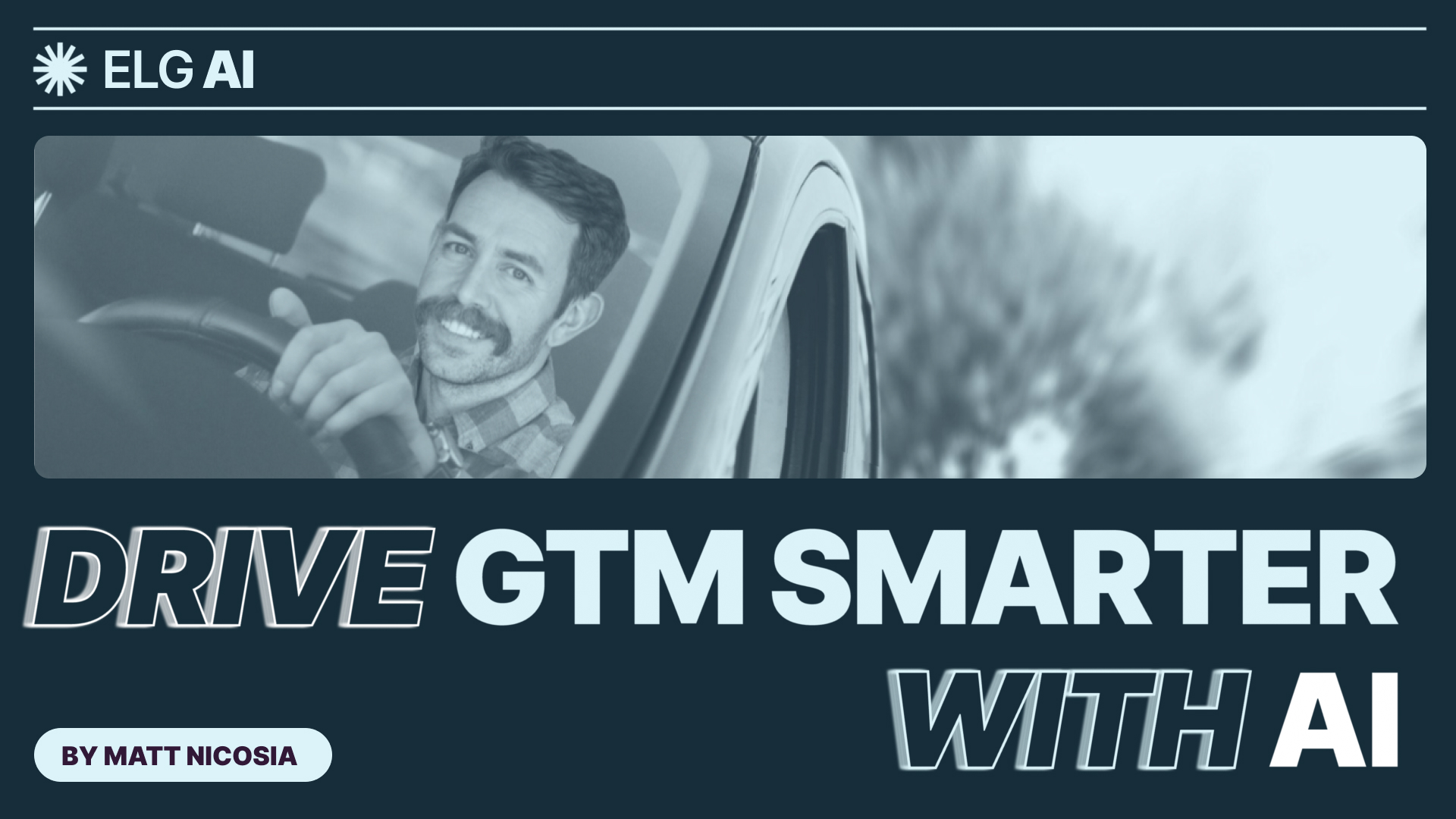Discover how AI is transforming partnership teams into data-driven revenue engines. Learn from Crossbeam, Arrows, HubSpot, and Euler leaders how to automate onboarding, account mapping, attribution, and partner engagement, and see the latest AI-powered tools in action.
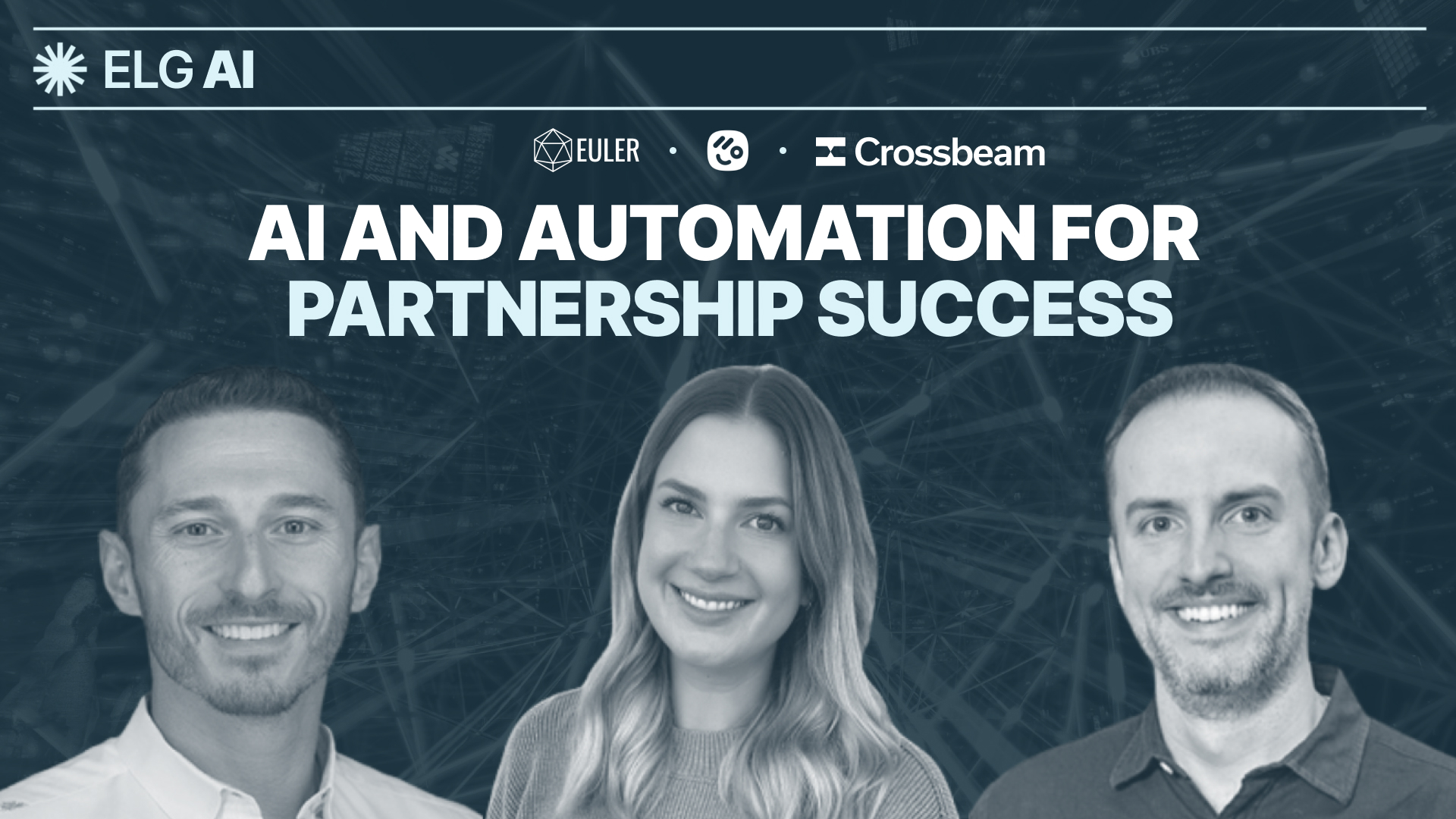
Partnership teams are the Swiss Army knife of go-to-market, simultaneously handling sales enablement, co-marketing, partner recruitment and onboarding, account mapping, relationship management, and more. But there’s a hidden tax: too much of this work is still manual, fragmented, and slow.
Across the industry, partner managers report spending 30–70% of their time on non-revenue-generating tasks: wrestling with spreadsheets, chasing down updates in Slack, piecing together attribution from half-complete CRM records…the list goes on. The result? Missed opportunities, inconsistent reporting, and partner ecosystems that underperform their potential.
In 2025, this is more than an efficiency problem, it’s a competitive risk. Partnership ecosystems are getting bigger, GTM noise is exploding, and leadership wants partnerships to deliver predictable, scalable revenue. As Bob Moore, CEO and Co-founder of Crossbeam puts it:
“People feel capable of more, but they’re held back by internal challenges and scattered data. AI can be the magic key that unlocks that capability and breaks down silos faster.”
The opportunity is clear: AI can transform partnerships from reactive, relationship-based support functions into proactive, data-driven revenue engines.
This and more was discussed during a chat with Kim Hacker, COO at Arrows, Bob Moore, CEO and Co-founder of Crossbeam, Denise Duest, Program Manager, Partner Enablement and Advocacy at HubSpot, and Greg Portnoy, Co-Founder and CEO of Euler, where they shared how partnerships is at a critical inflection point where AI can transform the function from a relationship-based sidecar into a data-driven revenue engine.
Let’s begin.
Why partnerships are at an inflection point
Partnerships are inherently complex, multithreaded relationships with overlapping workflows and multiple stakeholders. Without the right tools, even the most talented teams risk falling short.
Greg sees AI as the great equalizer: “You can have the smallest team operating efficiently, doing an amazing job, and completely outperforming a massive team. It’s all about who’s scaling and automating, and who’s not.”
AI doesn’t just speed things up, it enables partnerships to work differently:
- Continuous ecosystem monitoring: AI can surface partner account overlaps, deal-stage changes, and new customer wins in real time.
- Data-driven prioritization: Instead of guessing which partner to focus on, AI scores opportunities by revenue potential and urgency.
- Scalable enablement: AI-driven onboarding and support ensure every partner gets consistent, high-quality resources without draining PM time.
And critically, AI helps partnership leaders prove value with hard numbers: sourced pipeline, influenced revenue, faster deal velocity, and higher ACV.
AI in action: From a firehose of data to real revenue playbooks
“AI takes the firehose of data your ecosystem produces and applies a dynamic layer of intelligence,” said Bob. “It turns complexity into recommendations, actions, and prioritization.”
The power comes from the combination of rich ecosystem data and AI models that can interpret it, such as the newest AI features in Crossbeam. Here’s what that looks like in practice:
1. Account mapping at scale
- Match accounts across partner ecosystems automatically, even with incomplete or inconsistent data.
- Detect emerging opportunities when a partner adds a contact, closes a deal, or advances an opportunity.
- Prioritize overlaps based on revenue fit, engagement signals, or competitive presence.
2. Warm intro intelligence
- Identify which partner has the strongest relationship with a target account.
- Get suggestions for the best-fit partners for co-selling based on historical success patterns.
3. AI-powered playbooks
- Generate co-marketing campaign suggestions tailored to mutual customers.
- Recommend sales motions proven to work for similar account profiles.
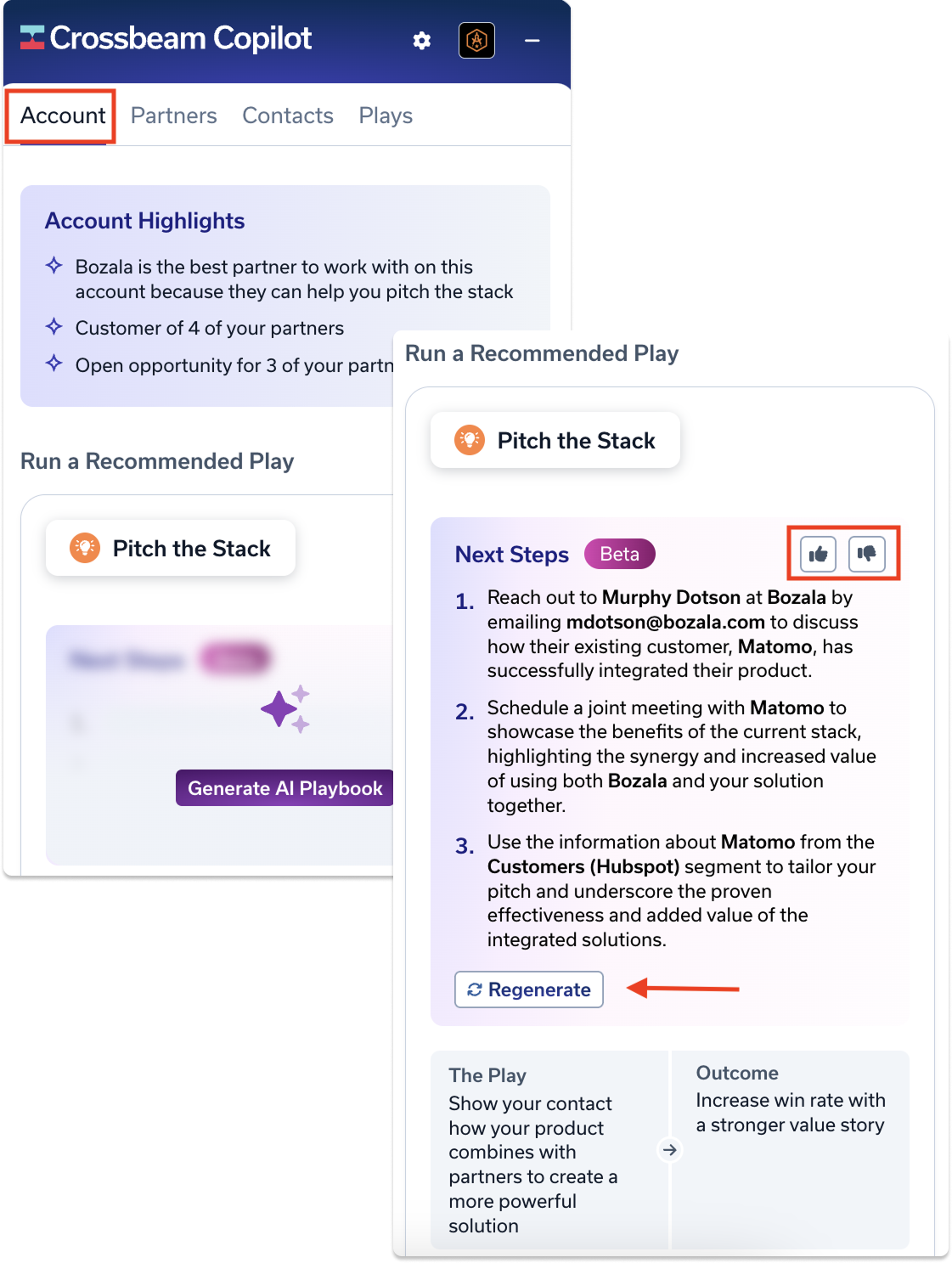
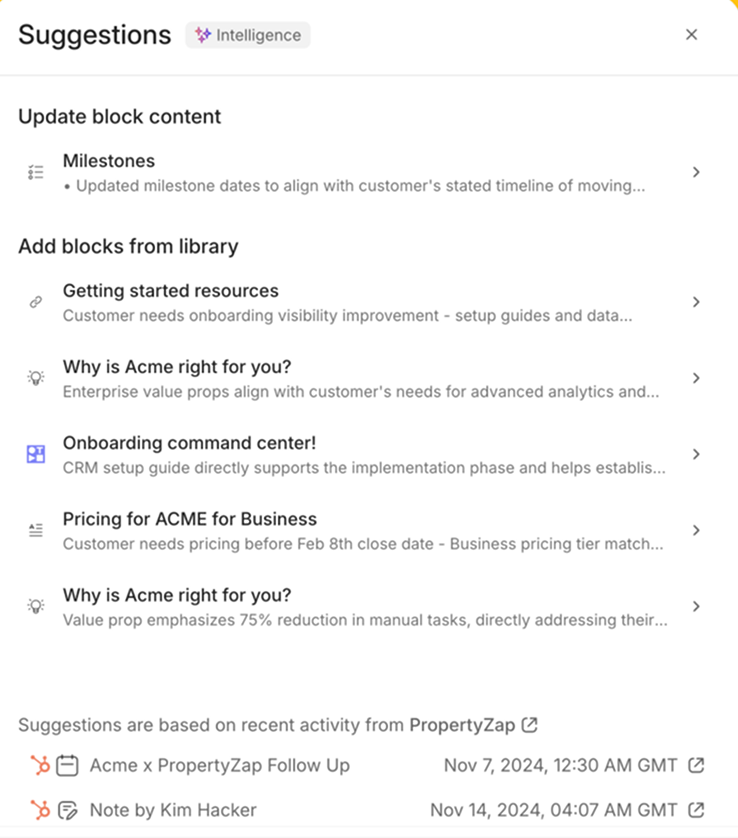
The AI advantage in partner onboarding
Onboarding is often the most overlooked and most important stage of the partner lifecycle. “Saying yes to a partnership doesn’t mean much,” said Kim. “Adding value early and showing commitment makes it easier for partners to be all in.”
AI can accelerate and standardize onboarding so every partner experiences a fast, smooth, and value-driven start:
Automated knowledge support
- 24/7 onboarding chatbot: Answers product, pricing, and process questions instantly.
- Contextual FAQ recommendations: Suggests relevant guides or videos based on partner actions.
- Voice-enabled guidance: Walks partners through setup or integrations step-by-step.
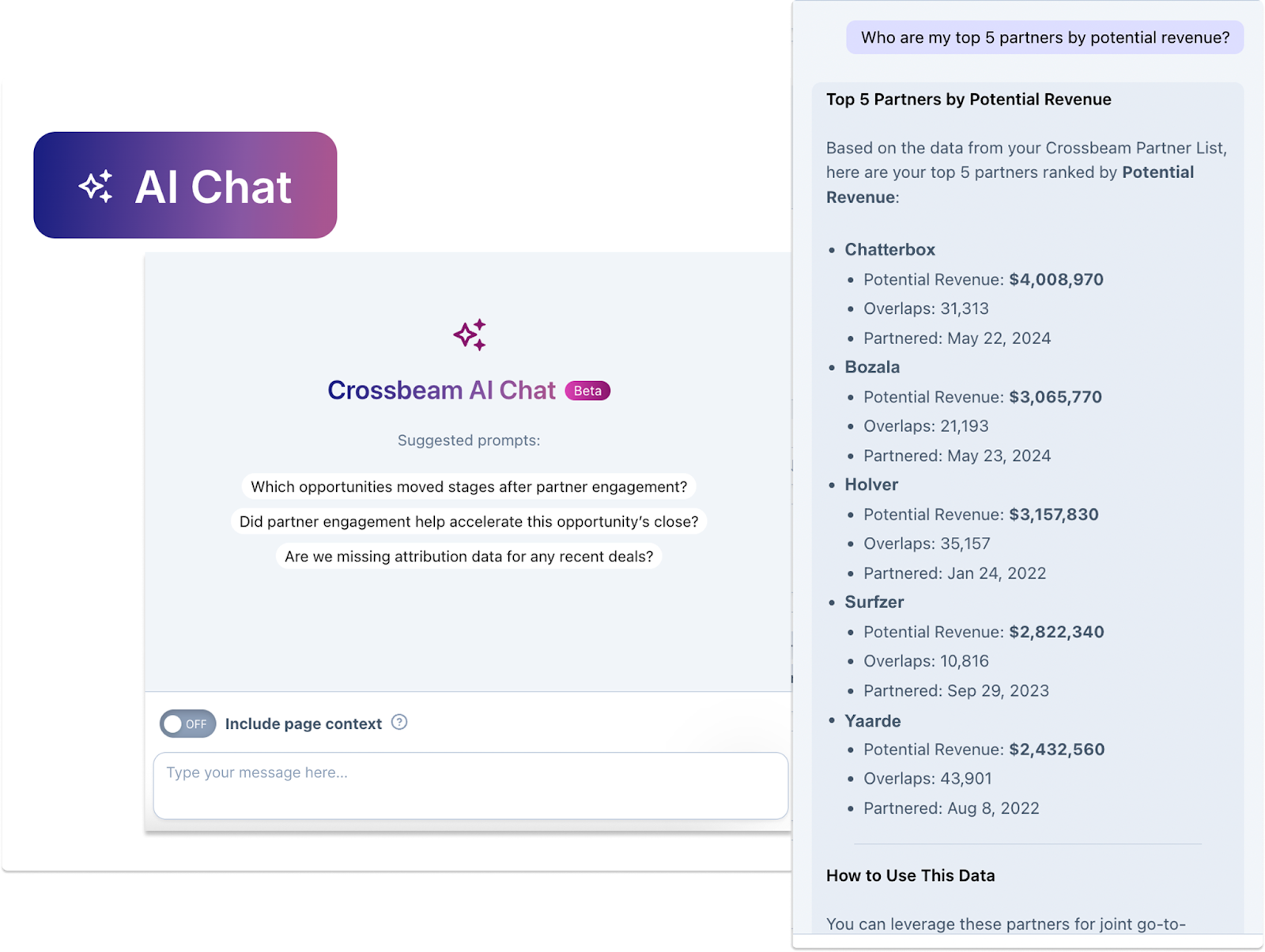
Workflow acceleration
- Auto-extract details from agreements and populate onboarding systems.
- Scan compliance docs for completeness and flag errors.
- Detect and resolve common CRM or ERP setup issues proactively.
Relationship building
- Flag frustration early with sentiment analysis so PMs can intervene.
- Get personalized milestone nudges to keep partners engaged.
- Use gamified progress tracking makes onboarding engaging and rewarding.
AI for attribution, insight, and influence
AI isn’t just for getting partners started, it’s essential for proving their impact and optimizing ongoing engagement. “The more companies leverage partnerships to drive revenue, the more partnerships will get competitive, if this happens, the only real way to set yourself apart is by delivering a better partner experience which involves sending business, effectively enabling or educating your partners, attributing their efforts, and AI can help with all of that,” said Greg. “This will help you to differentiate your product and relationship from your competitors.”
Attribution and deal matching
- Fuzzy matching: Connects deals to partners even with imperfect data.
- Multi-touch attribution: Weighs partner influence when multiple players are involved.
- Intent signal detection: Spot unlogged partner touches from web visits, downloads, or events.
Data cleansing and enrichment
- Automated partner tagging: AI reads email threads, meeting notes, and deal summaries to detect partner names and tag them to opportunities.
- Duplicate detection: AI spots duplicate partner records or misattributed deals across systems.
- Third-party enrichment: AI pulls in company info, funding data, or news to verify that the partner’s claim is legitimate.
Influence scoring and prediction
- Score partners by influence based on engagement, deal stage involvement, and content interactions.
- Forecast partner pipeline contribution from historical and real-time activity.
- Detect “dark funnel” influence, untracked touches outside CRM like social posts or event co-sponsorships.
Gong’s internal use case is a standout example: for every influenced deal, they use their own AI to log how and when the influence happened, and measure its impact on deal progression.
They focus on selling while its AI agents automate workflows, uncover actionable insights, and enhance their team expertise.
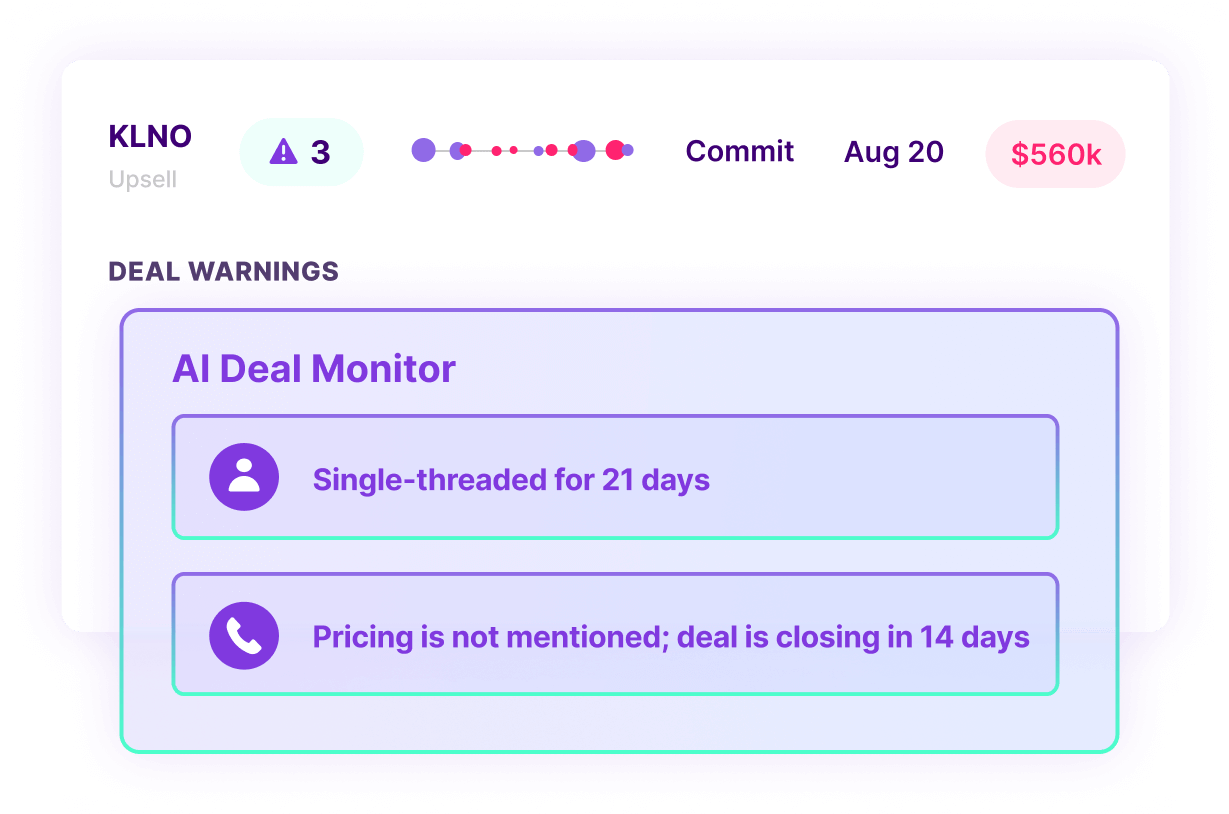
How to evaluate AI and automation tools for partnerships
Choosing the right AI tools for partnerships isn’t about chasing the newest trend, it’s about solving the specific problems that slow your team down and limit revenue impact. With so many platforms in the market, the smartest approach is to start small, focus on high-friction tasks, and prove value quickly before scaling.
Here’s Kim’s recommended checklist for evaluating AI tools:
- Identify your highest-friction problem: Pinpoint the smallest recurring task or bottleneck that eats up your time. For example, manual account mapping or chasing partner updates between calls.
- Audit your data collection habits: Review how you currently capture partner information, from CRM fields and meeting notes to Slack messages and ad-hoc emails.
- Map where insights get lost: Identify the moments where valuable intel slips through the cracks, such as mentions during a partner call that never make it into your system.
- Decide how AI can help: Determine whether automation can eliminate the task or if AI can augment your workflow by enriching, scoring, or routing the information.
Top tip: You can adopt existing tools like Crossbeam, Dreamdata, Euler, StructuredWeb, or build a custom GPT trained on your CRM, partner data, and enablement materials.
The future: Partnerships at the main table
Greg sums it up: “It’s an exciting time to take partnerships from a GTM sidecar to a main driver of revenue, thanks to AI.”
And the shift isn’t theoretical, partnership leaders are already operationalizing AI to make it happen.
Bob shared that Crossbeam has spent the past 18 months embedding AI into nearly every workflow: “All the stuff that we killed internally by operationalizing AI didn’t get killed because it didn’t work, it got swallowed by other AI tools. We went from no AI at the beginning to having 15 AI touchpoints, tools, and agents, with everyone in the company running things through an AI touchpoint.”
One example is Crossbeam’s internal AI Assistant, a company-wide chatbot integrated directly into Slack. Tag it in any channel, and it routes the question through a vast array of connected data sources — public Slack channels, the company knowledge base in Notion, Google Drive, Crossbeam itself, Partnerbase, the CRM, their Snowflake data warehouse, industry content, even Bob’s own book. The result is instant, context-rich answers without manual digging.
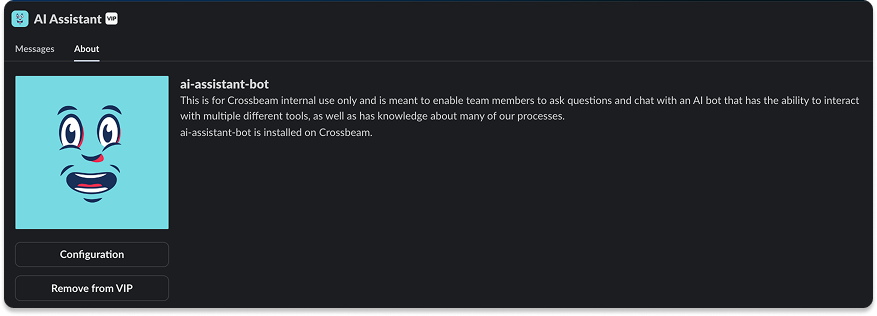
Other workflows you can take advantage of are NLP and LLMs for:
- Automating internal processes and sales support.
- Answering partner and reseller product questions.
- Calculating commissions.
- Managing deal registration and attribution.
- Handling RFP responses at scale.
Greg sees this as proof that AI is the lever that moves partnerships into strategic territory: when every partner manager has intelligent tools embedded in their routine, they can spend less time on repetitive admin and more on revenue-driving collaboration.
Kim also agrees with him: “The future of AI is understanding what our users are doing and incorporating that step right into our customer journey, not just as a way of asking GPT questions, but as a seamless, invisible part of the workflow. Our job is to automate and integrate AI so partner managers don’t even have to think about making that extra step.”
The takeaway? AI is no longer an optional efficiency boost, it’s the foundation for partnership teams that want a permanent seat at the main table. The teams that embed AI into their daily motions now will be the ones setting the pace for the next era of partner-led growth.
Ready to see AI in action? Book a demo with our experts today to explore Crossbeam’s AI-powered releases and discover how they can help your partnership program work smarter, scale faster, and drive more revenue.








































































































